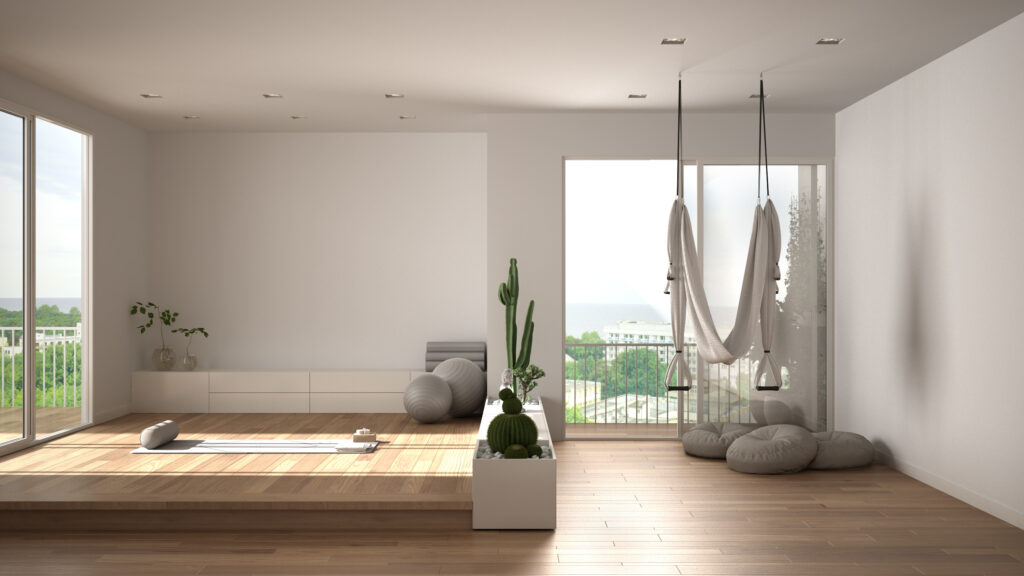
What Are the Big Trends in Wellness Real Estate and Communities?
It’s on the agenda at the GWI’s Wellness Real Estate & Communities Symposium
By Beth McGroarty, VP Research & Forecasting
We all know—personally, intuitively, and from reports from analysts and researchers—that the pandemic completely transformed the concept, function and value of the home. It became our “everything” (from where we work to workout), and during this long crisis, more people have questioned where and how they want to live (what they want in a home and community)—and the answer, in a word, is “more wellness”: more safety, nature and sustainability; space and serenity to work; and more purpose, meaning and true community.
As more people seek out homes and communities purpose-built to deliver more physical, mental and social wellbeing, the GWI’s Wellness Real Estate & Communities Symposium will bring together researchers, developers, architects and designers to identify the trends unfolding in the wellness real estate space. And I will be leading a panel with top real estate and business media on what the most powerful future concepts look to be—not just as fallout from the pandemic but because of bigger cultural and demographic shifts that will play out over decades.
A few trends the symposium will explore:
“The hardware”–The trends in technology and infrastructure to create more “well” buildings—from safety-tech (from air purification or touchless design) to a luxury, resort-level amenities smackdown on the high-end to “nudge design” that makes healthy behavior the easy path to futuristic smart homes (integrating sensors, AI, telemedicine). There’s so much innovation, from designing homes/communities for the coming global heatwave to new apps (like Sugar) that turn apartment buildings into interactive communities to “bio-experiential” multisensory spaces.
The programming “software”–The new, extremely different directions that programming concepts are taking, from the rise of super-sophisticated medical-wellness projects (see: Tri Vananda, Thailand) to developments that put mental health—and even spirituality—at the center (whether in design, with meditation spaces and prayer rooms, or programming, such as bringing in mental health professionals and coaches–see Gravity in Columbus, Ohio).
Nature, nature, nature: from biophilic design experiments to regenerative living–How the pandemic and environmental destruction have put an unprecedented new value on nature, impacting not just where wellness developments get built but fueling new experiments in biophilic design, a reinvention of the interplay between nature and the built environment, and in new, nature-based programming. If there has been tension between building for wellness and sustainability, how new regenerative, net-positive communities are producing their own food, renewable energy, recycled water—and building communities around farming/food, even in urban developments (see: Powered by Ulsteinvik, Norway).
The WFH shake-up: The radical acceleration of remote work, and mounting issues of burnout and loneliness, are spurring new destinations and concepts in wellness living: from multifunctional home design to projects that dissolve the line between home, work and wellness (with great work facilities and wellness programming). With remote, flexible living, there is a primary (once urban/suburban) and second/vacation home flip, so look for more wellness-centered pied à terres and extended stay apartment-hotels in cities and more fluid, flexible, fractional-based ownership models overall.
Baby boomers will reinvent “senior living” around wellness: Our world is aging as never before (the WHO predicts the 60+ population will double by 2050). In the US, there are 73 million baby boomers; 10,000 turning 65 every day; and by 2030, all will be at least 65. Boomers invented the wellness revolution, they’re active and engaged, and will entirely rewrite “senior living” models—rejecting the tired mega-developments filled with old people in favor of multigenerational, age-in-place living concepts in smaller, more creative, urban-close, social communities (see Cantina Communities near Austin, TX) that reflect their radically different attitude toward aging: a cool, joyful, live-well-and-long approach.
Beyond the elitist high-end: The pandemic made clear that wellness is a burning public health issue and that where you live and your built environment have an outsized impact on your wellbeing. The wellness real estate/communities space is poised to move beyond the elitist, billion-dollar palaces and penthouses to a new wave of more affordable, inclusive, pragmatic wellness communities and healthy building driven by forward-thinking governments, policymakers and developers. For instance, Agrihood in Santa Clara, CA, a coming farm-focused wellness community, features a balance of mixed-income apartments and homes for low-income seniors and veterans.
There are so many more trends to talk about in the evolving, growing wellness real estate world—from the powerful impact millennials will have on this market to the new resort/residence/community models that big wellness resort players (Six Senses, Aman, SHA Wellness, GOCO Hospitality, etc.) are creating, a combined revenue model enabling more amazing projects.
Things are moving fast; it’s a whole different future for wellness real estate and communities than the one imagined in 2019. Join us at the Symposium (in-person in NYC or virtually, September 28) to help see that future more clearly.
Wellness Real Estate & Communities Symposium
Tuesday, September 28, 8:00 AM-4:00 PM ET • In Person NYC & Virtual























































